Artist Interviews 2022
Johnny Otto 
By Julia Siedenburg
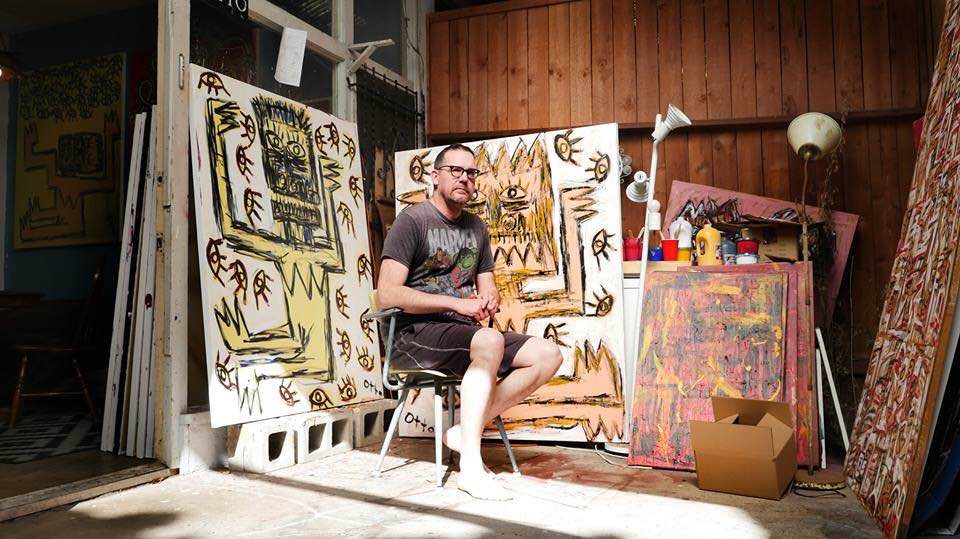
Where does the inspiration for your pieces come from?
When I was a little kid my father took me to the Detroit Institute of Arts to see their amazing collection of paintings. Most of the artists I had seen in my father’s books or had heard about, but there was one room that was dedicated to African Art and I had never seen anything like it or even been aware that it existed. It was mostly wooden masks and wooden sculptures, Nothing painted or on canvas. It seemed otherworldly to me, and ceremonial. It haunted me for years and I begam doodling in class when I was bored. Eventually those rough sketches began to fill up books and then I began painting. That was more than 40 years ago and my style has evolved a great deal but the inspiration is the same.
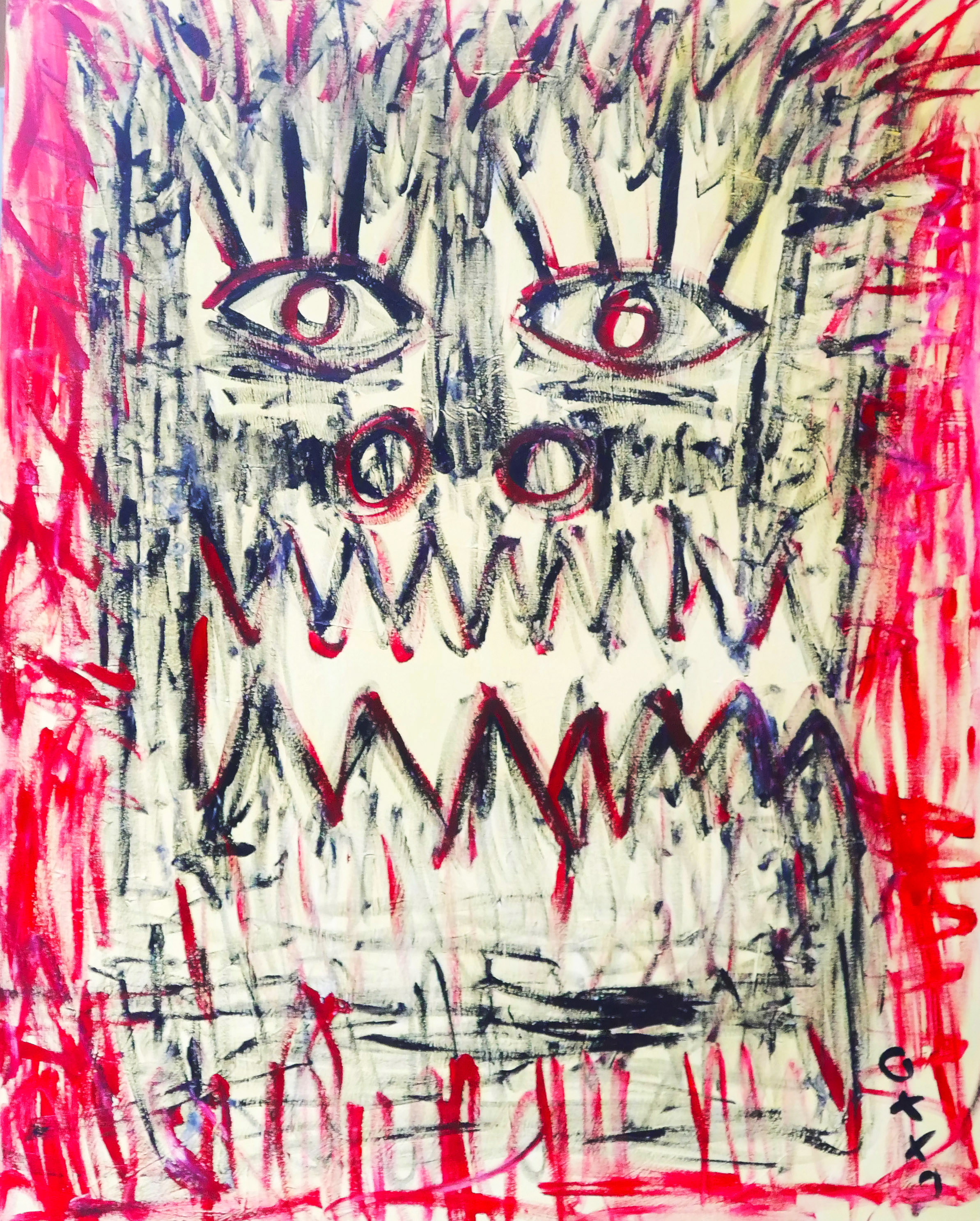
Have you always been making art or have you found your way to painting later?
As I said, I started doodling in my homework books in class. That was when I was about 9 or 10 years old. Then throughout high school I continued to doodle. I even painted all the walls in my bedroom and the ceiling. I had a jar by the door filled with markers and invited anybody who came in my room to add something to the walls. I’m surprised that my [parents let me do that. Although my dad was a doctor, he encouraged us all to be creative. Painting didn’t really come to me until much later. When I moved to Los Angeles in 1990, that’s when I really began to paint. I guess I felt like it was going to be my home for a long time and that there was more opportunity to have an art studio and to start showing my work, which is what I did. One of my first shows was actually the Divine Design Art Auction hosted by David Hockney. I believe that was 1993. I was about 27 years old. That was 29 years ago and I’ve been painting feverishly ever since.
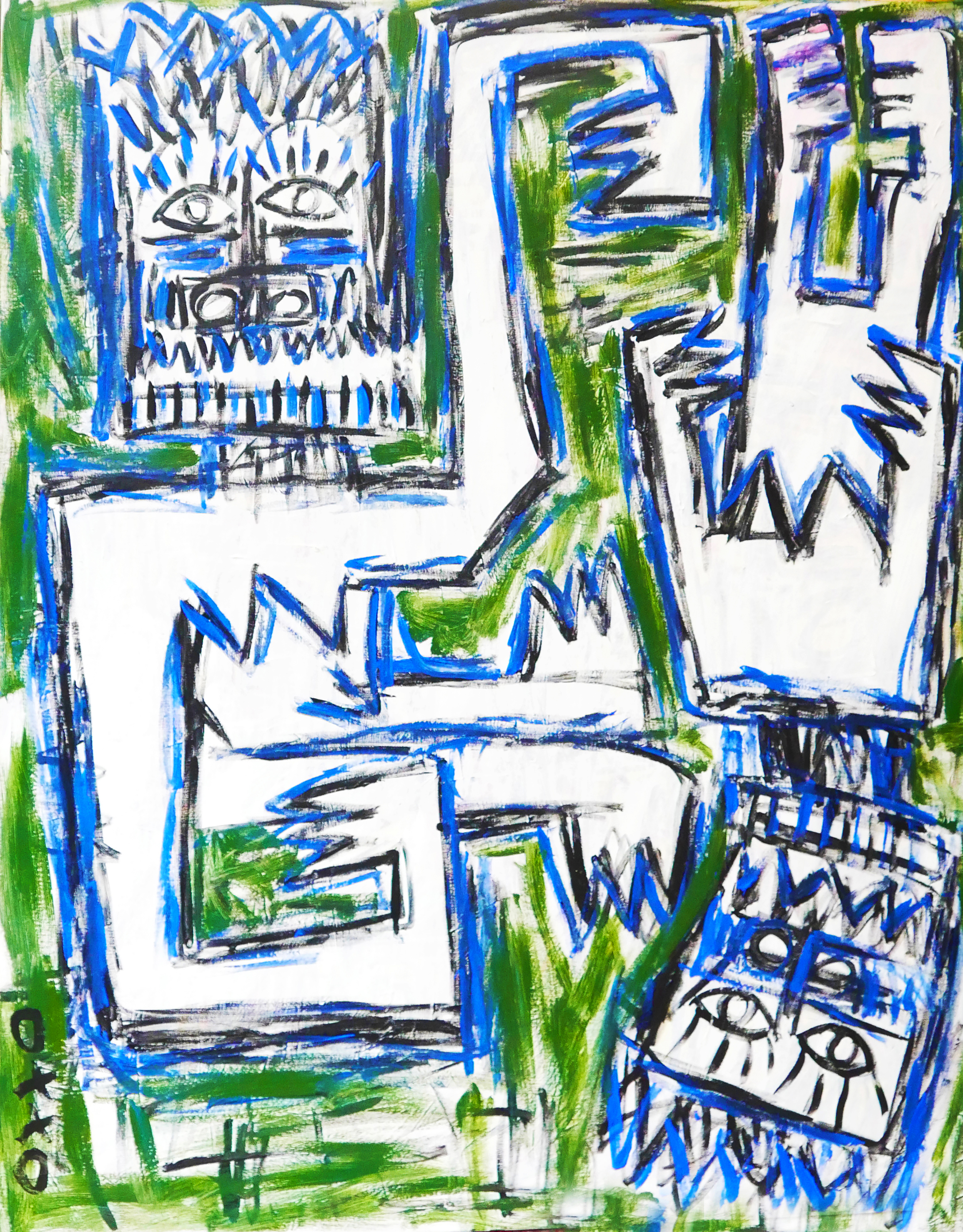
How would you describe your style ?
I like to call it Punk Rock Picasso. Picasso had a period when he painted African Masks or Faces. That was in 1907 or 1908. He was 26 or 27 years old. My work has also been compared to Basquiat and Haring but I never really studied there work until more recently. I went to the Broad a few years ago and saw a Basquiat for the first time in person, and the thing that I noticed and inspired me, was how messy his work was. The canvas was dirty on the sides like it had been in a basement for decades. There was a shoe print on it and gum. Seeing his work kind of freed me up to be more messy and expressive. My style, overall, is expressionistic with African Influences.
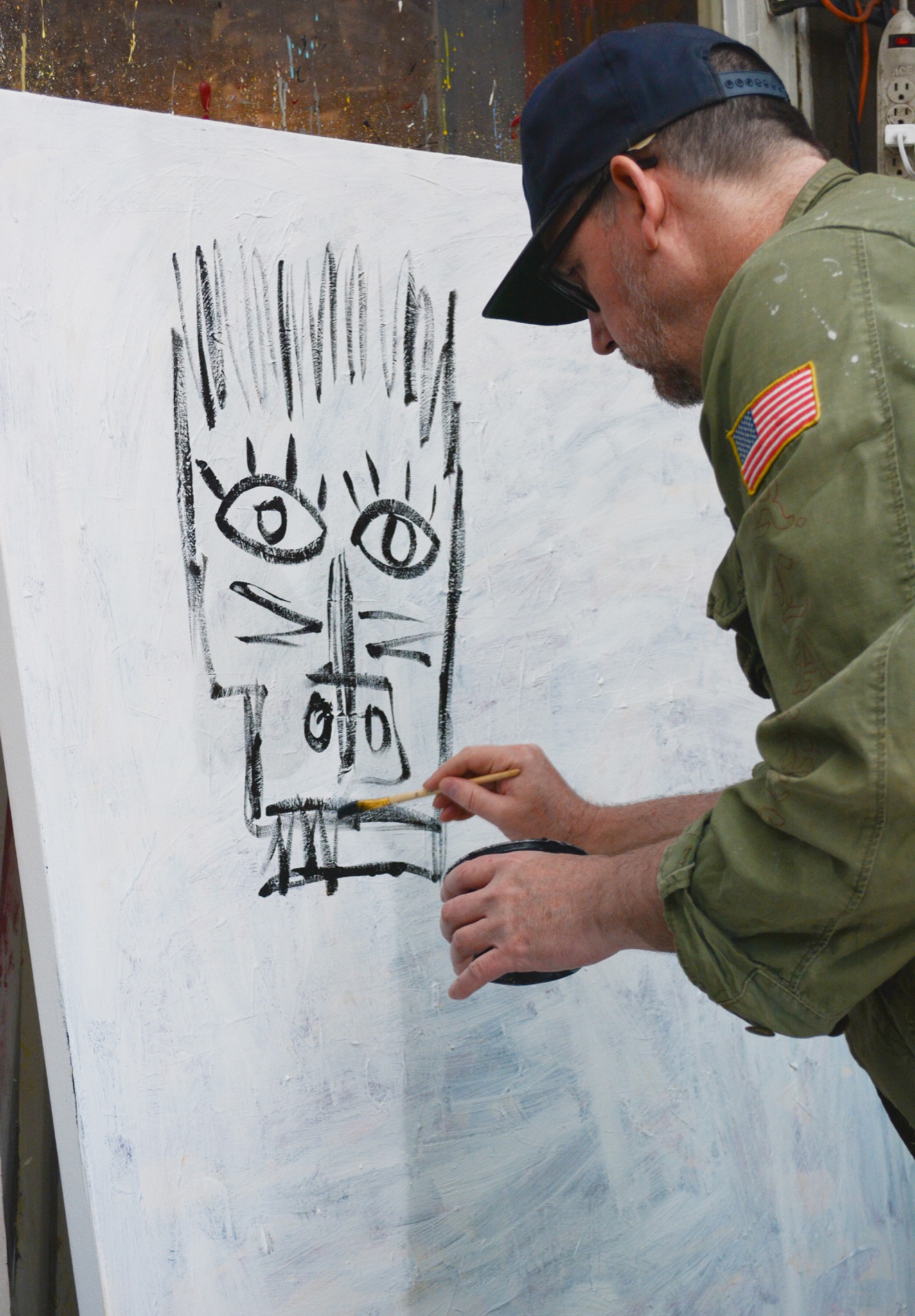
Please describe your process to us.
Each painting can take me several weeks to finish because there is a great deal of underpainting. That is the process of layering paint so that the final image is not smooth but it has a great deal of texture. If you touch one of my paintings, you can feel the bumps and grooves of all of the underpainting. My first step is to paint the entire canvas a light yellow or off white. That takes several hours to dry then I immediately do another coat. Once that has dried, I begin scribbling on the light color white balck paint. Making shapes and patterns that might turn up in the finished painting but more than likely will just be part of the overall texture. It also loosens me up and frees me to make the mess I was talking about. At this stage there is no real goal to create an image that has any meaning or represents anything. It’s just scribbling, as I’ve said. Once the black paint has dried I will do more light paint. Maybe pure white. Then more balck scribbling. Then finally another coat of off white or pure white. Once this has dried, usually several days have passed at that point, then I start outlining my final image with black paint. I fill in the back ground around the figure, add color, more details, more balck outlines, Several days of refining the image and adding more color. Then we have something.
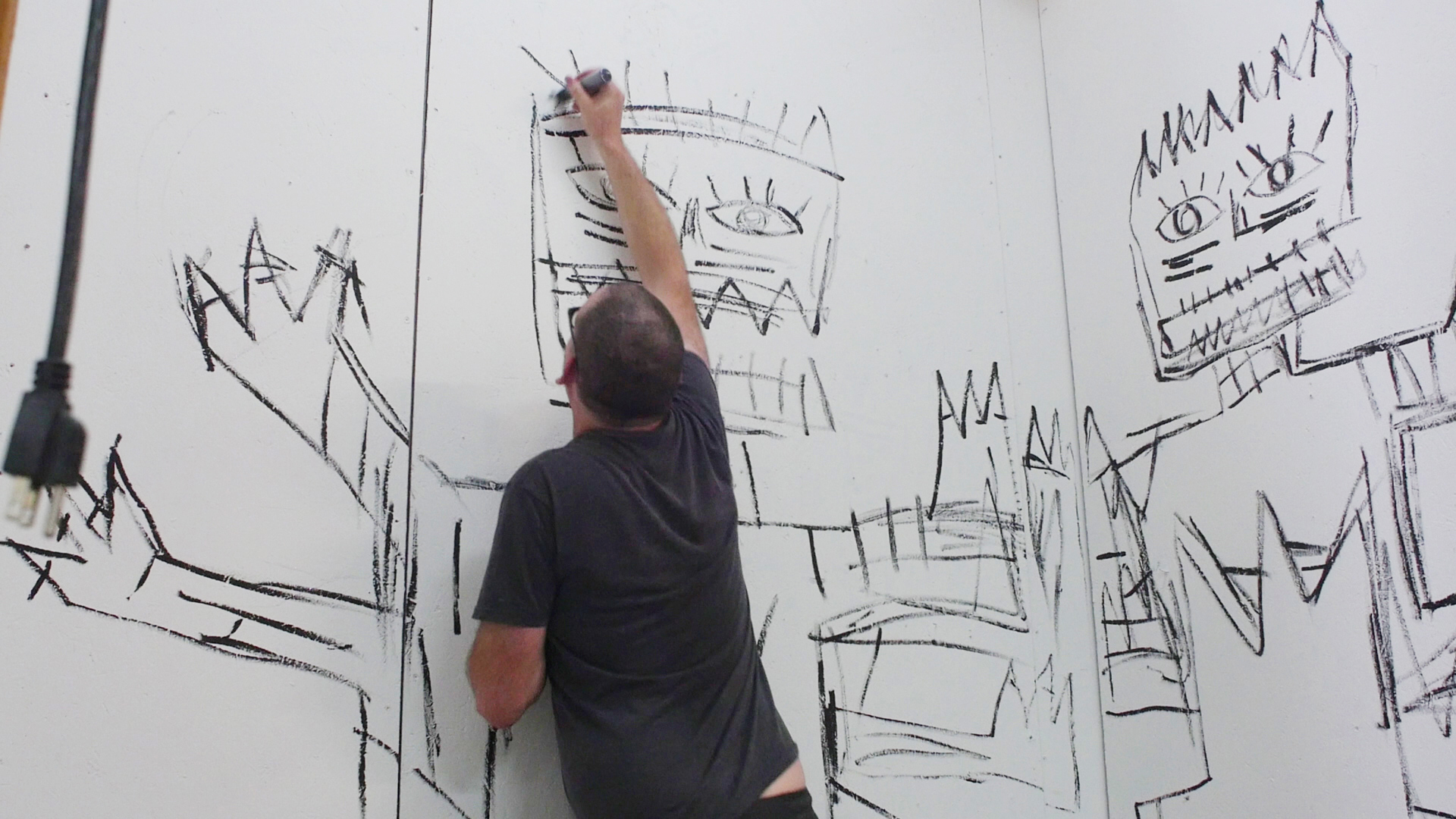
Tell us a bit about your background and your upbringing.
Well, I was born in Ohio, which is strange because the rest of my brothers and sisters where born in Pennsylvania. I was the youngest of four boys and older than my two sisters, so I was sandwiched in between. When I was about five years old my family moved to Canada and I spent my childhood there.
I was a loner. I liked to play by myself and to create imaginary worlds. I wasn’t very social. I wrote a lot. Drifted through school with the knowledge that one day I would be leaving Canada and moving to California. So I didn’t make too many strong connections with people. I don;t know how I knew I’d be leaving but I always had that inkling. I took a year off after High School and then I went to Film School. My brother and I and some of the kids from the neighborhood, had always made short films. My dad, again encouraging us, bought us a Super 8 camera and so we started making these little films and then screening them in the basement and charging the neighbors a dime to see them.
I went to film school for a few years then California started calling me for real. I saved up enough money for a one-way ticket, I had a duffle bag with my clothes in it and $600 in cash. I moved to Los Angeles and never looked back.
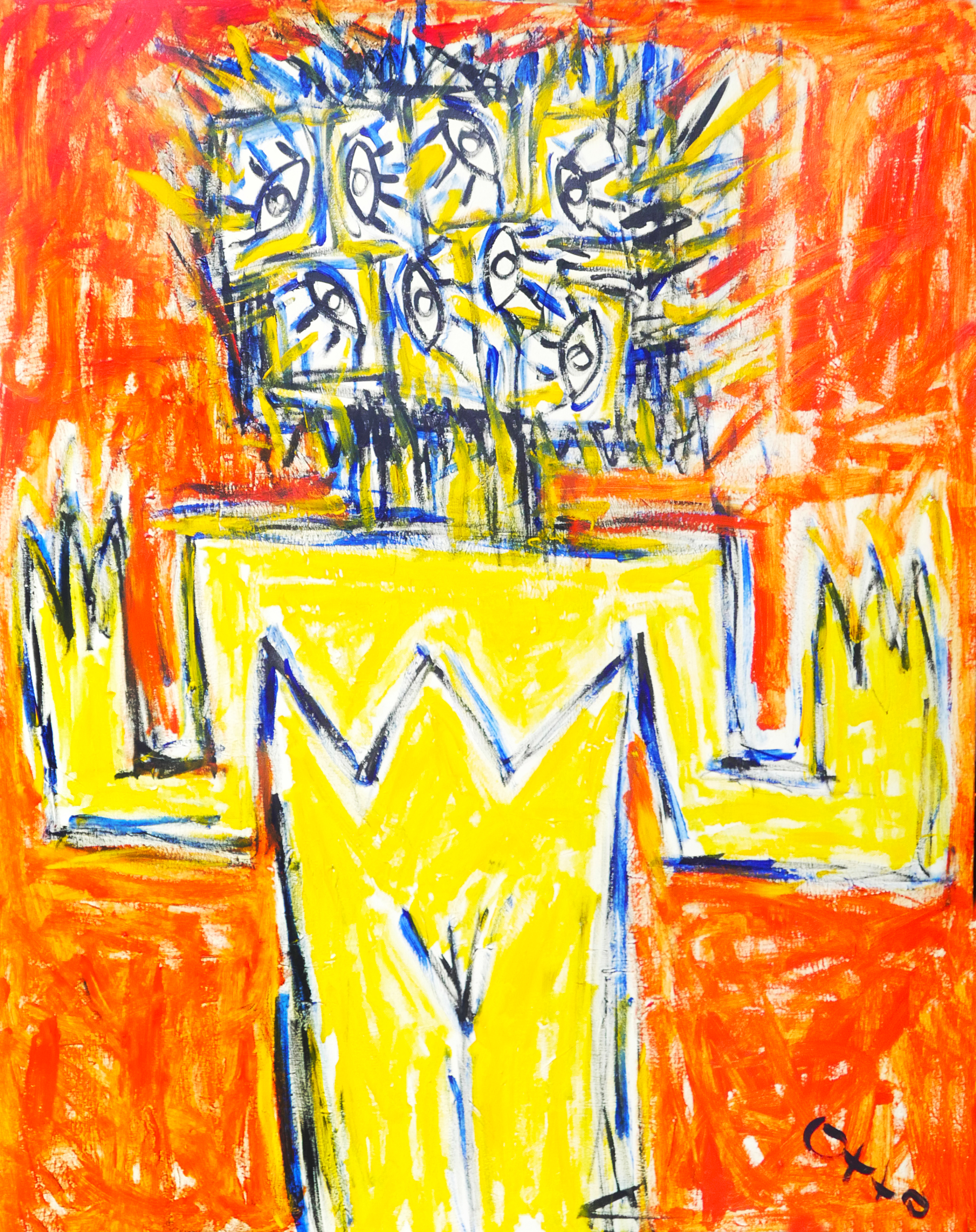
Besides painting you are also very skilled in graphic design, animation and photography. Would you say all artists are muti talented?
I think that all people have the potential to be whatever they want to be if they set their minds to it. A lot of people don’t exercise their creative muscles enough. I’ve always been the type of person that when I am faced with something that I don’t know how to do, I just kinda figure it out. I like challenging myself in that way. For example, I had never designed a game for iPhones or Androids and it seemed like a daunting task, so I knew it was something I had to do. I spent a year developing several games for mobile devices and learned a lot in the process. I like to do that every few years to keep the noggin sharp. A lot of really talented musicians are also very visual and create amazing artwork, so I do see that a lot in other artists, as well.
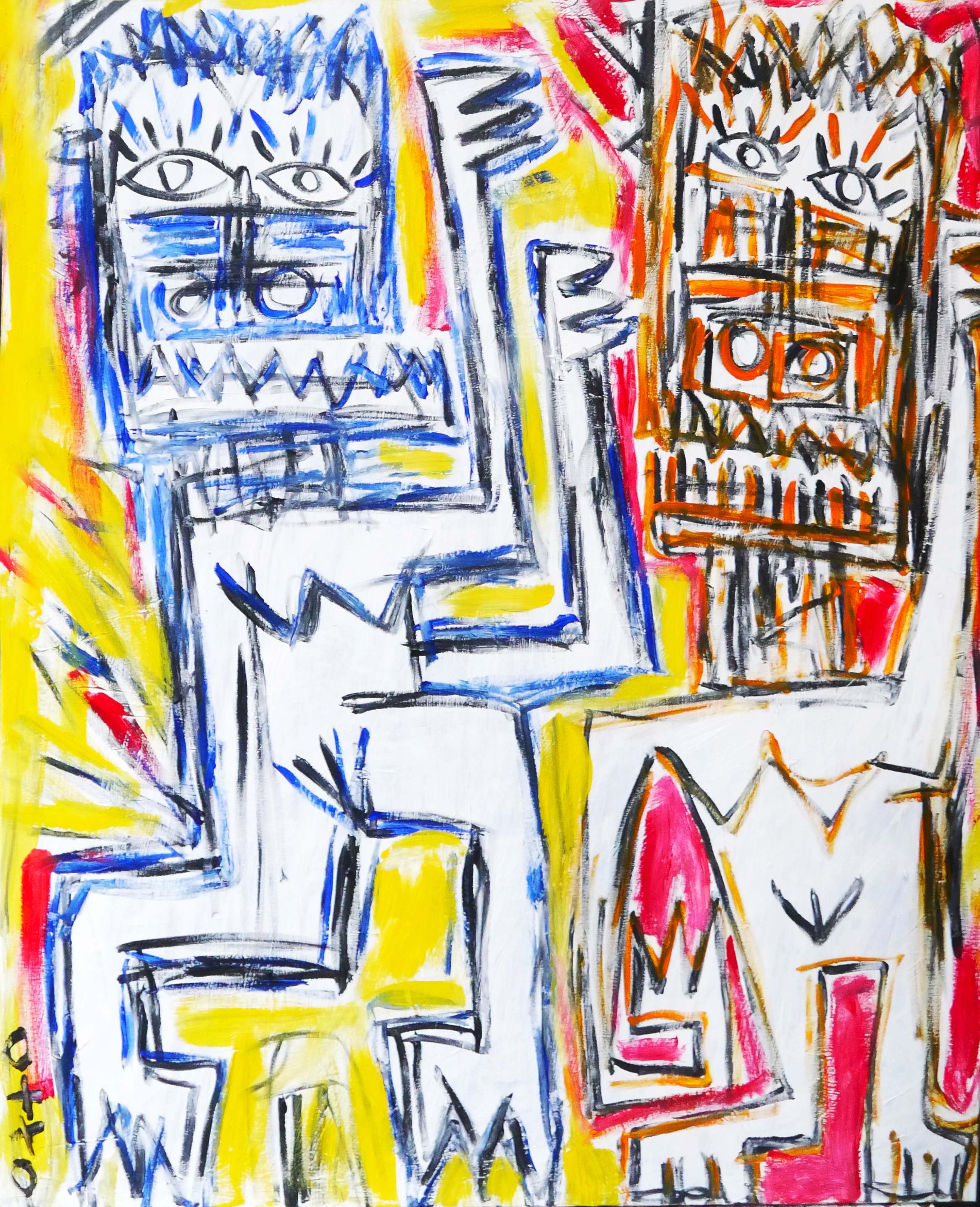
You were raised in Canada. What are some of the distinctive characteristics in Canadian art? Woud you say there are more similarities or differences in Canadian and American art?
I was never really interested in Canadian Art. To me it was always about landscapes, trees and snow and it seemed depressing. Canadian winters are brutal. If you haven’t lived there, then there is no way of explaining what 40 below zero feels like. It crushes your soul. And a lot of the art reflects that emptiness. At least that is the way I saw it when I was growing up. Some people think it’s beautiful, but barren trees and frozen lakes and snowy fields were not my thing. I grew up learning about European Art from my father. He had a lot of books in our family room in the basement of our house. I wasn’t very familiar with American Artists at the time. I think that a lof of the American Art that I like is actually from Europeans who immigrated to New York or Los Angeles or Chicago. American Art to be is really more experimental, more expressive, more vibrant. At least that’s how I felt about it in the 70’s and 80’s. It’s changed a lot over the years and I am sure there are Canadian Artists who are more experimental now and not interested in barren landscapes and trees.
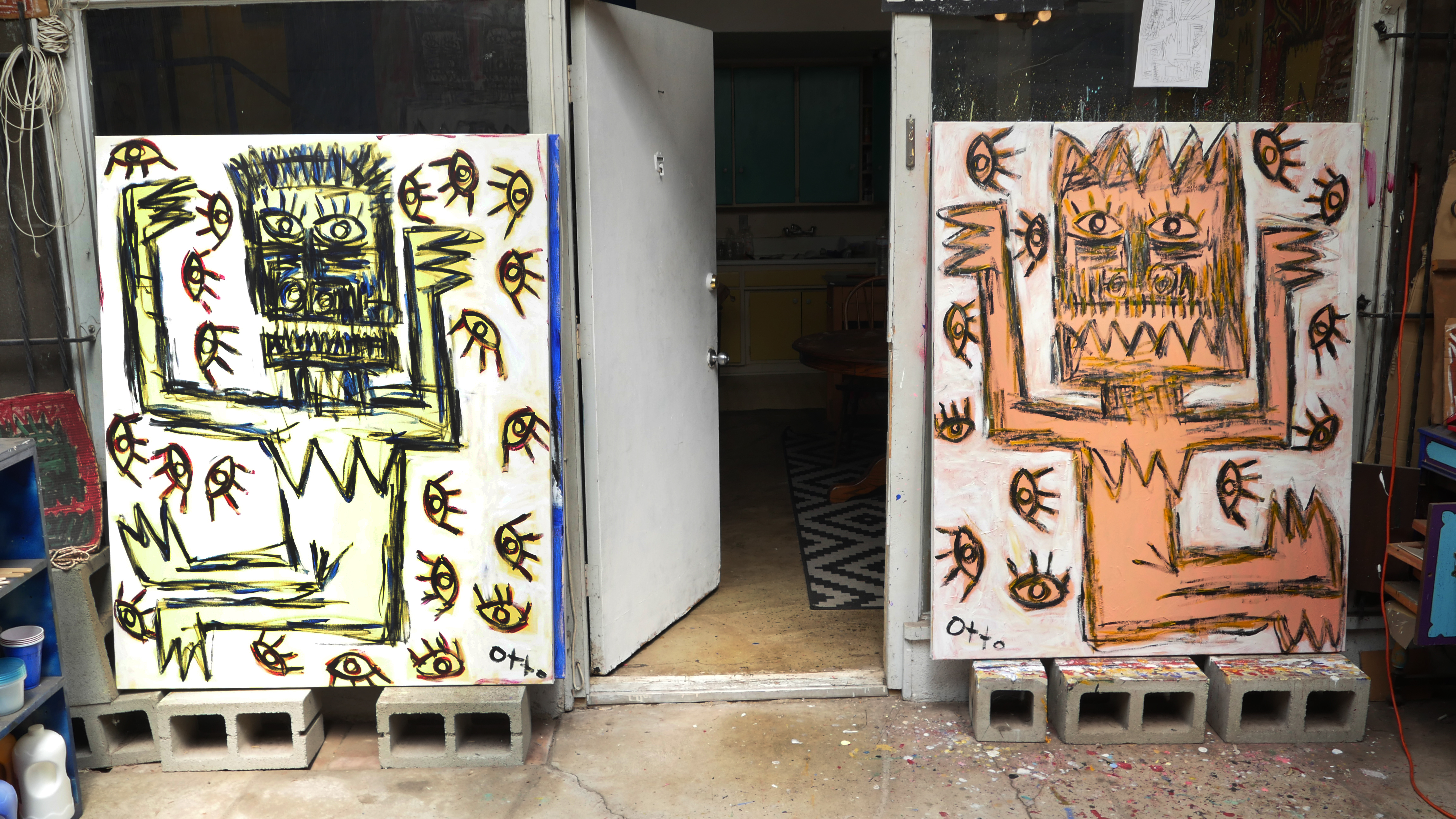
If you would not be an artist, what career would you have pursuit?
I’ve dedicated more than 40 years to art, filmmaking and writing, so it’s a bit late for me to have any other options on the table. My father probably wished that I had taken after him and become a doctor, gotten married and had a bunch of kids. The American Dream, right? That was never in my blood. I never felt that calling. I think 50% of marriages end in divorce because people end up chasing the wrong things. Not to say that I am not interested in making money, but that’s not what drives me. Art drives me so that’s all I can do. If I did something else just for the sake of putting a roof over my head and food in my belly, I think I’d go mad.
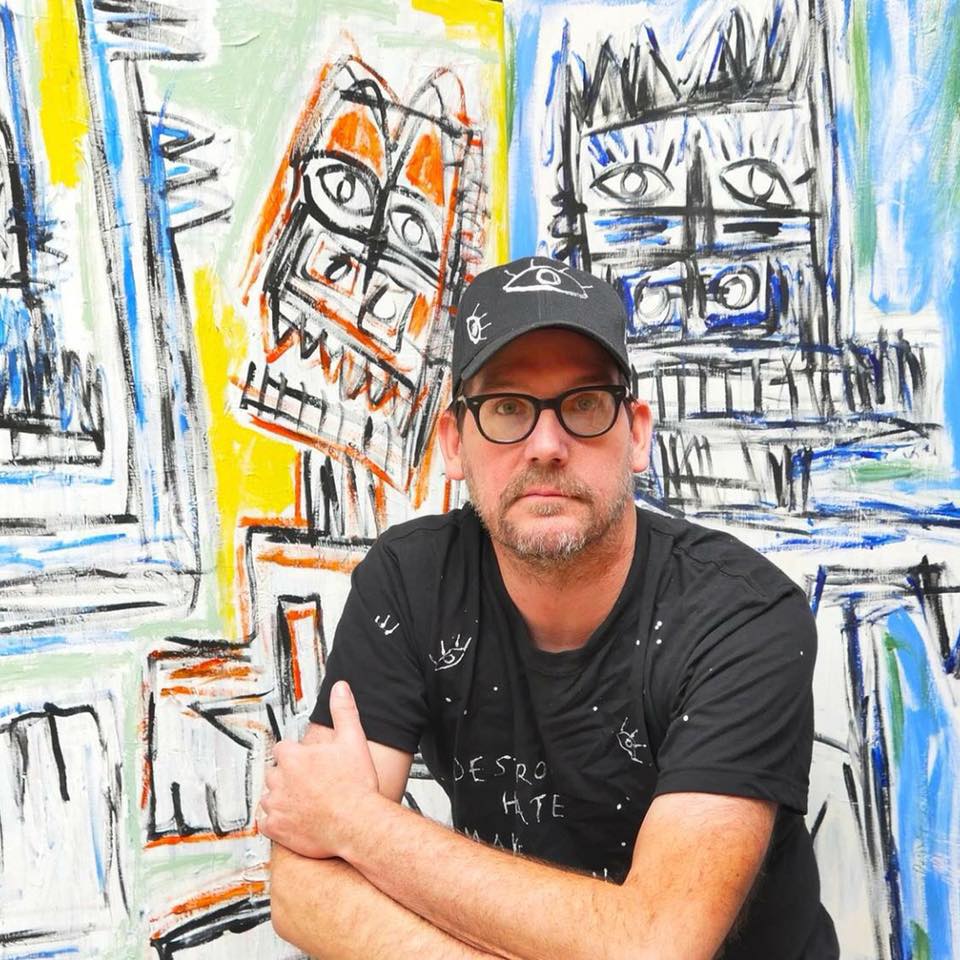
Tell us in which way running Art Squat Magazine has changed your work/life?
I dreamt about starting an art magazine for years. I had heard that Warhol started one and I knew that I needed to have one. Also, I was making friends with a lot of artist who didn’t know how to promote their work and I thought a magazine would be a good vehicle to help artists that I was meeting and that I admired. The one main way that the magazine has changed my life is that it’s gotten me out of the house more, going to art shows and events and meeting even more artists. That’s always a bonus. I think it’s also strengthened my visibility in the art community.
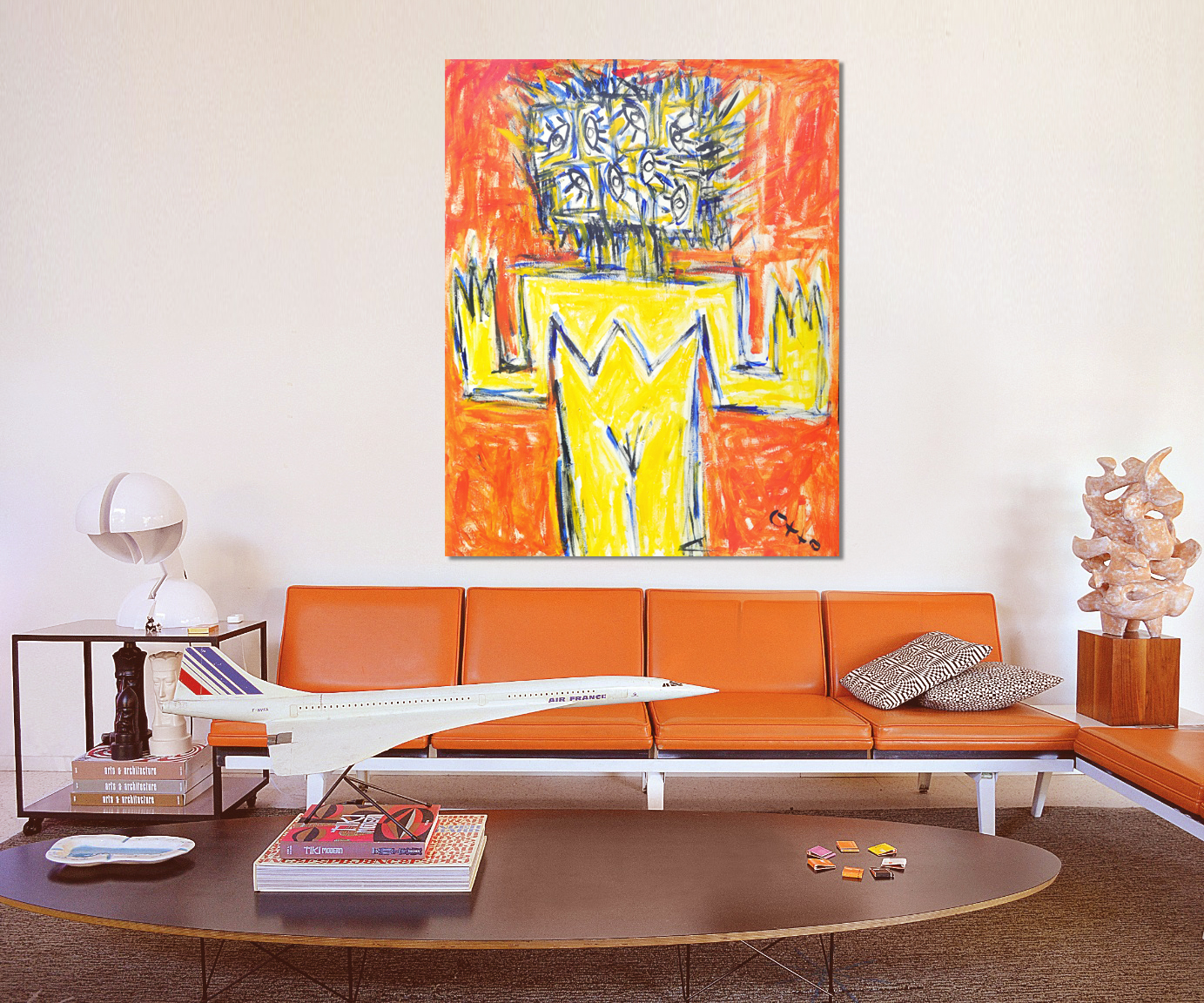
What is next for you and your art? Any plans for the near future?
I’ve been painting a lot and have a lot of new pieces so I am planning a solo exhibit for the end of 2022 or early 2023. I also want to publish a book of my work. I’ve completed several eBooks but nothing in print and that’s definitely a goal. I’ve also been planning a feature film. To direct a script that I wrote. I am looking for financing for that at the moment. I’ve also created some animated series, which I am shopping around to networks. There’s a lot to do.
|
|

